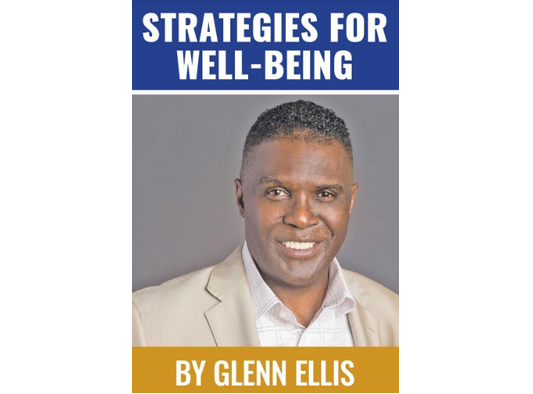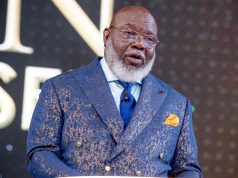By Glenn Ellis
As of now, there is no clear proof that the antibodies that develop after being infected with COVID-19 offers any protection from future infections. Even if these antibodies will protect you, no one knows what antibody levels are needed to protect against reinfection.
As evidenced by the man in China who was the first confirmed case of being infected a second time, we need to accept that there is much we need to understand about COIVD-19, in order to protect ourselves as best as possible.
As pointed out in an earlier column, as summer comes to an end, the prospect of a flu season during the coronavirus pandemic is a frightening thought for many health experts.
Six months after the start of the pandemic, we are seeing tens of thousands of deaths; and thousands of people experiencing horrible effects from the virus even after surviving. And yet, we seem to be as far away from understanding this COVID-19 virus.
Now, it what can only be called a “mind-blowing” decision, the Centers for Disease Control and Prevention (CDC) has just issued guidance that says, “If you have been in close contact (within 6 feet) of a person with a COVID-19 infection for at least 15 minutes but do not have symptoms: You do not necessarily need a test unless you are a vulnerable individual or your health care provider or state or local public health officials recommend you take one.”
REALLY?
It has been barely a month, since the CDC, themselves, confirmed that 40 percent of all COIVD-19 cases in the United States are in people who don’t know that they are infected. In other words, people who are asymptomatic. Up until now, the guidance stressed the importance of testing people who were in close contact with infected people. Now, without explanation, this is no longer recommended.
To his credit, the director of the Centers for Disease Control and Prevention (CDC) last week issued a clarification of earlier guidance on coronavirus testing, days after a quiet change sparked protests from the scientific and medical communities.
In a statement, Director Robert Redfield said those who come into contact with confirmed or probable COVID-19 patients could be tested themselves, even if they do not show symptoms of the virus.
“Testing is meant to drive actions and achieve specific public health objectives. Everyone who needs a COVID-19 test, can get a test. Everyone who wants a test does not necessarily need a test; the key is to engage the needed public health community in the decision with the appropriate follow-up action,” Redfield said.
Still, his earlier comment left people stunned.
As recently as June, the CDC’s advice was, “Because COVID-19 is highly transmissible and can be spread by people who do not know they have the disease, risk of transmission within a community can be difficult to determine. Until broad-scale testing is widely implemented, or we have a more comprehensive and precise measure of disease burden, states and communities should assume some community transmission or spread is occurring.”
Go figure! The whole purpose of doing testing is to reduce the rate at which someone infected comes in contact with someone not infected or reduce the probability of infection if there is contact. The more a person interacts with different people, and the longer and closer the interaction, the higher the risk of COVID-19 spread. So, can someone help me to understand why, all of a sudden, the CDC is changing course in midstream, and now discouraging testing?
Hospital and death records show that Black people, Latinos, and Native Americans are disproportionately suffering and dying from severe disease; nationwide, Black people are dying at 2.5 times the rate of whites. Black and Brown communities face higher rates of diabetes, heart disease, and other conditions that worsen the COVID-19 prognosis. People of color are also more likely to live in crowded neighborhoods and have low-wage, essential jobs where social distancing is difficult or impossible.
I’m still trying to wrap my head around the fact that that in light of the massive As reported recently, in the Washington Post, “many scientists say such infection bursts — probably sparked by a single, highly infectious individual who may show no signs of illness and may unwittingly share an enclosed space with many others — are driving the pandemic”. It’s no secret that Black and Latino people are more likely to live in densely populated inner-cities and neighborhoods, in cramped, multigenerational homes, exposing them to more people, thus more opportunity to infect or be infected. On top of that, the same families are, in essence, being forced to send their children back into schools, only magnifying the potential for children and young people to expose older relatives.
There are two reasons to conduct COVID-19 testing during this pandemic: to confirm that people with symptoms are actually infected with COVID-19 ; and to detect the virus in people who have been infected, but don’t know it, because they don’t have any symptoms.
The London School of Hygiene and Tropical Medicine has estimated that just 10 percent of people may be responsible for 80 percent of novel coronavirus cases. So, what is it that the CDC is saying to the rest of us?
There’s not a lot more “evidence” we need to see from the ever-changing guidelines; the neglected communities who have carried a disproportionate burden of the infection, sickness, and the deaths; and now the seemingly blatant ignoring of the need for testing in light of the obvious vulnerability , to realize that in many ways, as we have been historically, we are on our own.
Glenn Ellis, MPH is a Visiting Scholar at The National Bioethics Center at Tuskegee University and a Harvard Medical School Research Bioethics Fellow. He is author of Which Doctor? and Information is the Best Medicine. For more good health information visit: www.glennellis.com




